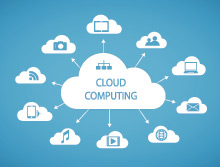- No Inter- operability or firmware issues, as everything is designed to work in a compatible platform.
- Perfect management of physical and virtual resources owing to single pane glass management.
- No blame- game between vendors as there is only a single point of support.
- Deployment is possible within just weeks because of value analytics facilitation.
Smart Storage
Creating a standalone high- performance storage solution is fairly easy to do these days in comparison to getting the solution to scale- up to meet the comprehensive needs of a modern business. Smart storage will scale without requiring a significant increase in operational costs and will provide considerable additional benefits such as below:
- Virtualization of external storage – to enable a multi- vendor strategy to minimize costs and avoid islands of storage.
- Smart pools – to automatically avoid hot- spots and place data on the most cost- effective tier. ( SSD or HDD)
- Virtual machine level policies – to enhance snapshots, replication and performance.
- Non- disruptive data movement – to enable migrations and workload mobility.
- Non- disruptive upgrades – to significantly reduce time, risk and cost involved in deploying new equipments and systems.
- De- duplication and compression – to reduce the cost per TB.
- Encryption of data at rest – to secure the most critical data.
- Consistent performance – to ensure application service levels are met even during maintenance and replication processes
Active/ Active Replication
Active/ passive replication is no longer good enough to deliver the availability requirements of a modern 24×7 business, the next generation of business continuity solutions will be based around an active/ active architecture to enable:
- Metro Clusters – to provide the benefits of virtualization across sites.
- Network virtualization – to enable workload mobility, irrespective of any L3 constraints.
- Active/ Active data access – to provide continuous operations in the event of storage or site failure/ maintenance.
Replicated Storage with Integrated Backup
This is tricky, as many organizations want an independent copy of the data rather than replicated snapshots for backup, but for customers who embrace snapshots, there are many benefits:
- Instant backup and restore – as data does not need to move.
- Multiple daily backups – to provide more recovery points.
- Combined backup and DR – backup data is included in off- site replication.
- Minimal tape backups – maybe once a month or possibly none at all.
Unified Data Protection
For organizations that are looking for a more conventional approach to data protection ( i.e. not one based on snapshots), there are considerable benefits to deploying a unified solution:
- Consolidation – to manage backup, archiving, snapshots, storage resource management and search from a single product.
- Reduce backup size – with the help of integrated file, NAS, Exchange, and SharePoint archiving.
- Centralized backups – for remote offices and edge devices.
- Manage array snapshots – to enable fast backups during the day, near instant recovery and off- line mining.
- Easily find data – full text indexing of on- line, archive and backup copies.
- De- duplication everywhere – source, target and replication.
Backup- free Content Platforms
Most people agree that archiving first has to be the way to go to resolve the challenge of having to backup more and more data, but archiving to a platform which still needs to be backed- up, does not entirely address the problem. This is where Content Platforms come in, they are a relatively newer and more efficient way to manage storage that provides many benefits:
- Backup less – to enable faster backups and reduced cost.
- Reduce primary storage – to save capacity and cost.
- Enable compliance – to enforce both, retention and deletion policies.
- Active data protection – key enabler for the backup- free architecture.
- Efficient storage – using de- duplication and compression.
- Massive scalability – to 10s or even 100s of PBs.
- Easy to set-up and manage – at any scale.
- Always on – non-disruptive expansions, upgrades and refreshes
Streamlined Management and Monitoring
Having all this technology is great, but it has to be easy to manage and monitor with the key expectations being:
- Minimal number of management frameworks – across all solution components.
- Policy based automation – from virtual machine, through the network to the storage.
- Service level monitoring – to rapidly identify when applications are short of resources.
Public Cloud Services
It is difficult to imagine that over the next 5- 10 years, most data centers will have disappeared and their applications, moved into the public cloud. On the other hand, the cloud is not likely to be obsolete and you can only see more use of cloud services over time.
One good example of this is to leverage cloud storage services, such as Amazon S3/ Glacier, along with an on- premise cloud storage gateway. This has all the same benefits as a Content Platform, but the data is held off- premise.
So nothing radical, but hopefully a good summary of many of the core infrastructure technologies that will become common place in many data centers over the next 5 years.

Jagadeesh is a former Happiest Mind and this content was created and published during his tenure.








